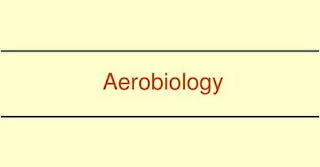
What is Aerobiology?
Aerobiology (ἀήρ, aēr: Greece, "air"; βίος, bios, "life"; and-λογία,-logia , "Science") is a branch of biology that studies organic particles, such as bacteria, fungal spores, very small insects, pollen grains, and viruses, which are passively transported by air. Medical application of aerobiology is essential in the study of the spread of the disease through the air. Aerobiology involves interactions with engineering sciences and meteorology.
Air
Most of the air contains oxygen and nitrogen. Air refers to the mixture of gases in the Earth's surface. The air does not appear to the eye, no smell, no taste. The presence of air can only be seen from the presence of the wind that moves the objects. The air is one of the types of natural resources because it has many functions for living things.
The content of the element compound gases and particles in the air will vary with height above the ground. Likewise, its mass will decrease as the altitude. Getting closer to the troposphere layer, then the air is getting thin, so that the Earth's gravity over the limit, then the air will be entirely hollow. When living things breathe, the oxygen content is reduced, while the carbon dioxide content increases. When the plant was undergoing photosynthesis system, oxygen is liberated again.
Air Content
Air consists of three major elements, namely, dry air, water vapor, and aerosols. The content of dry air is 78% Nitrogen, 20% oxygen, 0.93% Argon, 0.03% carbon dioxide, 0.003% other gases (Neon, Helium, Methane, Krypton, hydrogen, Xenon, Radon, Ozone). Water vapor in the air comes from evaporation (evaporation) in the sea, rivers, lakes, and other watering places. Aerosols are small-sized objects, such as salt, carbon, sulfate, nitrate, potassium, calcium, and particles from the volcano.
Life
Life (cf. biota) is a characteristic that distinguishes objects that have a cue and self-sustaining processes (living organisms) and objects that do not have them, either because such functions have died or because they don't have the functionality and classified as inanimate objects. The science that deals with the study of biology are life.
Living organisms undergo metabolism, maintain homeostasis, has the capacity to grow, respond to stimuli, reproduce and, through natural selection, adapt to their environment in successive generations. More complex living organisms can communicate through various means. A wide array of living organisms (life forms) can be found in the biosphere on Earth, and the General properties of these organisms plants, animals, fungi, protists, archaea, and bacteria is a form of carbon and water-based cells, with complex organization and inheritable genetic information.
In philosophy and religion, the conception of life and its nature varies. Both offer interpretations about how life relates to existence and consciousness, and both touch on related issues, including the attitude of life, purpose, the concept of God or gods, souls or life after death.
Science
An experiment for the sake of the development of science. Science, science, or science is the whole conscious effort to investigate, discover, and increase human understanding of the various facets of reality in human nature. This facet is limited so that the resulting formulation-formulation. The science of providing certainty by limiting the scope of his vision, and the certainty of science gained from its limitations.
Science is not just knowledge but encapsulates a set of theories based on the knowledge that was agreed upon and can be systematically tested with a set of methods that are recognized in a specific field of study. Viewed from the angle of the philosophy of science, formed because people are trying to think more about knowledge. Science is a product of epistemology.
The natural sciences could only be sure after the field is limited to in the event that banana (material only), or the science of psychology can only predict human behavior if the scope of his vision is limited to the public in terms of human behavior that is concrete. With regard to this example, the natural sciences to answer questions about how the distance of the Sun and the Earth.